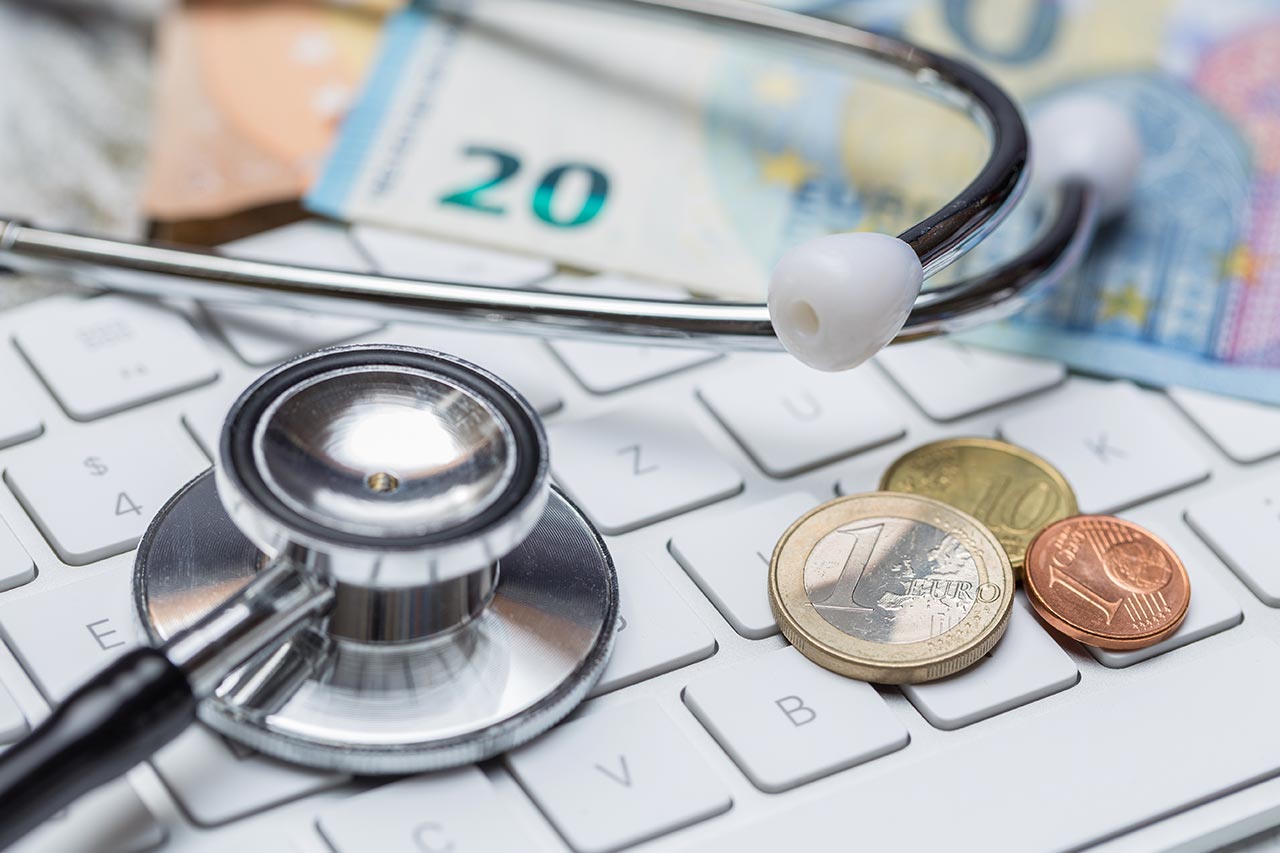What do Robotic-Assisted Surgery (RAS), meshes for breast reconstruction and Next Generation Sequencing (NGS) have in common? They are highly innovative, they have high potential to improve patients’ health and their cost is often not entirely reimbursed across several European healthcare systems. In this article, Alcimed investigates 3 main challenges linked to the reimbursement of medical devices.
Challenge n°1: bringing scientific evidence on benefits of innovative medical devices
Today there is a lack of evidence supporting innovative health technologies medical benefits
Scientific and clinical evidence are key when it comes to reimbursement decisions. Indeed, before coming to a decision, Health technology assessment (HTA) stakeholders will consider clinical studies and reports to assess the efficacy and safety of healthcare technologies, to make sure patients are safe and receive the best treatments. This assessment is particularly important for new devices challenging the traditional procedure.
While assessing health technologies safety, public authorities must evaluate scientific evidence supporting their medical benefits and superiority. These elements will be key in understanding whether these devices should be reimbursed by healthcare systems and to what extent. While evaluation before reimbursement seems to be a logical step, it is also one of the biggest challenges for the providers of these devices.
For instance, let’s consider RAS and its assessment by French HTA stakeholders, such as the French National Authority for Health (HAS). The HAS evaluated the safety and efficacy of robot-assisted nephrectomy and robot-assisted hysterectomy for benign indications respectively in 2019 and 2021, before making any decision on the reimbursement of these devices by health insurance. Conclusions were unambiguous: in both cases, results from literature were not robust enough and comparative studies were missing to determine the medical benefits of the technology.
Let’s consider another example. In Germany, NGS tests reimbursement is limited to 25kb. These tests can also be accepted for specific diagnosis such as for lung cancers, but their reimbursement for other indications remains otherwise quite challenging. One of the main barriers mentioned to the adoption of NGS in Germany was the lack of published data, namely factual evidence presenting the benefits of NGS on patients’ survival rate or quality of life.
Innovative models to overcome scientific validation hurdles
Introducing alternative or complementary evaluation models and having them approved by public authorities could be a first step to overcome such barriers. For instance, comparative studies might not be completely adapted to surgery and thus, to the evaluation of RAS.
New health technologies could benefit from additional data gathered through another type of studies: real-life studies. Indeed, real-life studies at the same time include the conditions of use in real life, measure outcomes and risks related to the use of the device and consider the organizational impact. Yet, it is key to discuss with relevant authorities and medical stakeholders prior to setting up these studies, to understand their pre-requisites, expectations and best protocols to follow.
Challenge n°2: demonstrating the cost-effectiveness of innovative medical devices
Insufficient medico-economic insights today
When assessing health technologies and deciphering their reimbursement, public authorities consider not only the medical benefits of the device, but also its efficiency and budgetary impact. This is what we call “medico-economic” studies. These studies are particularly important when devices are likely to have a significant impact on health insurance expenditure. This is especially the case for technologies such as RAS or NGS, which have significant impacts in terms of prices and re-organization in medical centers. Yet, regulators lack today medico-economic data supporting the use and sustainability of these technologies on the long-term.
Lack of medico-economic data can affect RAS’ reimbursement status. For instance, the use of RAS during surgeries is identified in France thanks to a code introduced in 2020 by the CNAM . Yet, this code does not cover all the necessary upgrading of the medical block, training of hospital staff etc. induced by RAS. Reasons behind this are the lack of scientific data, but also the lack of medico-economic data, to support the cost-effectiveness of the technology.
If we consider the use of meshes for breast reconstruction, the situation is quite similar. In both France and Germany, current reimbursement tariffs do not provide full coverage for the use of specific meshes in breast reconstruction. In Italy, in many regions implants for breast reconstruction are not included in DRG, leaving no possibilities for reimbursement. Public regulators are expecting medico-economic data supporting the benefits and superiority of the product to improve its reimbursement.
Find out more about how our team can support you in your market access projects >
Inventive schemes to enrich medico-economic insights
It seems that providing complete medico-economic data, including all aspects of the intervention (the devices, but also hospital environment, staff training, disposables…) is key to solve this issue. That’s why presenting a coherent business model for hospitals, with adequate data, is important before approaching regulatory issues.
To help on this point, in some European countries, specific government-funded schemes exist and can help complete the assessment of healthcare technologies from both a medical and an economic point of view. In France for instance, the “forfait innovation” is open to medical devices and professional acts. It must be used to finance part of a clinical or medico-economic study, designed to fill in the data gaps. In this framework, healthcare technologies are assessed in their environment, making it possible to integrate the indirect costs such as those generated by organizational changes generated to their direct costs.
Again, each case should be discussed separately with relevant authorities to decipher pre-requisites and expectations, to get access to such schemes.
Challenge n°3: providing consistent training and guidelines regarding medical devices
Disrupted learning curves and unharmonized guidelines
Last but not least, training and robust medical guidelines are key to support new technologies. Indeed, the introduction of new technologies can disrupt medical staff learning curves,. This point is crucial, especially when it comes to surgery where there can be potentially major complications. Without adequate training and clear guidelines, regulators will not be inclined to integrate and reimburse them.
Finally, let’s consider RAS. If we look at the learning curve of surgeons on a given procedure, their outcomes will improve with experience until reaching an acceptable standard. Additional experience will slowly increase their performance until reaching a plateau. Introducing new technologies such as RAS will disrupt learning curves of surgeons. Settings, gestures and instincts won’t be the same. Indeed, surgeons will be performing surgery behind a screen using joysticks instead of their own hands. The device might offer also more possibilities in terms of degrees of freedom, requiring surgeons to adapt. Hence, surgeons might experience temporary deterioration in their learning curves, which calls for specific training.
Similarly, the introduction of new diagnostic methods requires consistent guidelines in terms of methodology and indications to target, to support their integration in medical practices. If we take the example of NGS in Italy, the diagnosis method can be used for a selection of therapies, especially for lung and head and neck cancers. Currently, NGS use and NGS reimbursement are not standardized across the country. For instance, Lombardy listed specific mutations, whereas other regions did not specify which mutations are eligible for NGS reimbursement. Defining key biomarkers and guidelines would surely help in the spread of this innovative technology.
Collaborative programs to bring together private and public stakeholders
Supporting surgeons right from universities could be a solution to prevent any deterioration in their learning curve. Several companies are already committed to doing so. In addition, we observe many kinds of partnerships between MedTech companies and medical societies that clearly help in the definition of new training programs, new or updated guidelines, and other types of educational material.
Despite presenting clear medical benefits and being supported by medical stakeholders, innovative healthcare technologies may face several challenges before entering the market. Criticisms include in particular a lack of scientific evidence, of medico-economic data and of training/consistent medical guidelines. These challenges clearly prevent some innovative technologies from being fully reimbursed and integrated into several European healthcare systems. Yet, companies and public stakeholders have several options to answer these challenges and Alcimed can support you in exploring these leads. Don’t hesitate to contact our team!
About the author,
Charlotte, Consultant in Alcimed’s Life Sciences team in Switzerland

